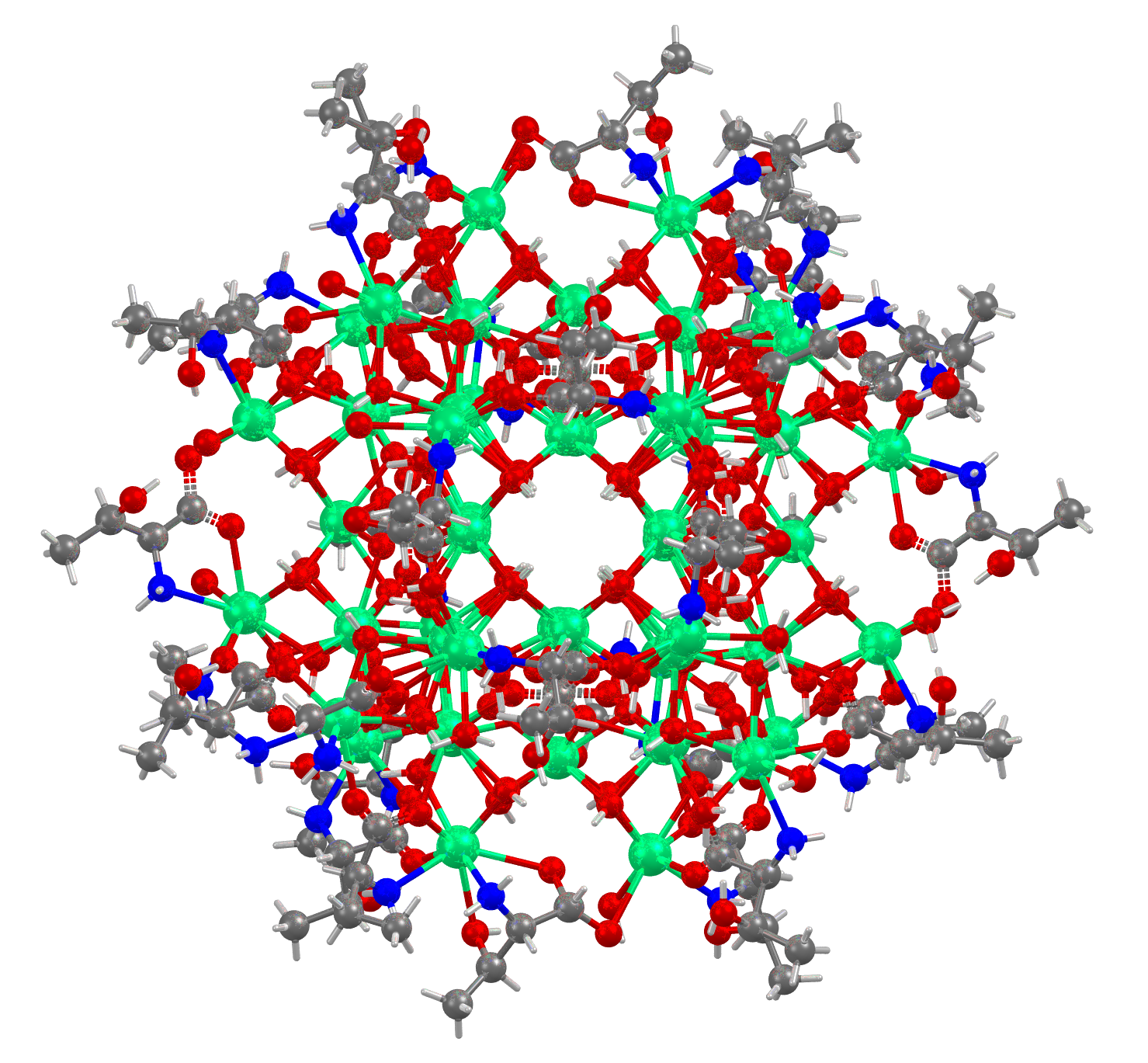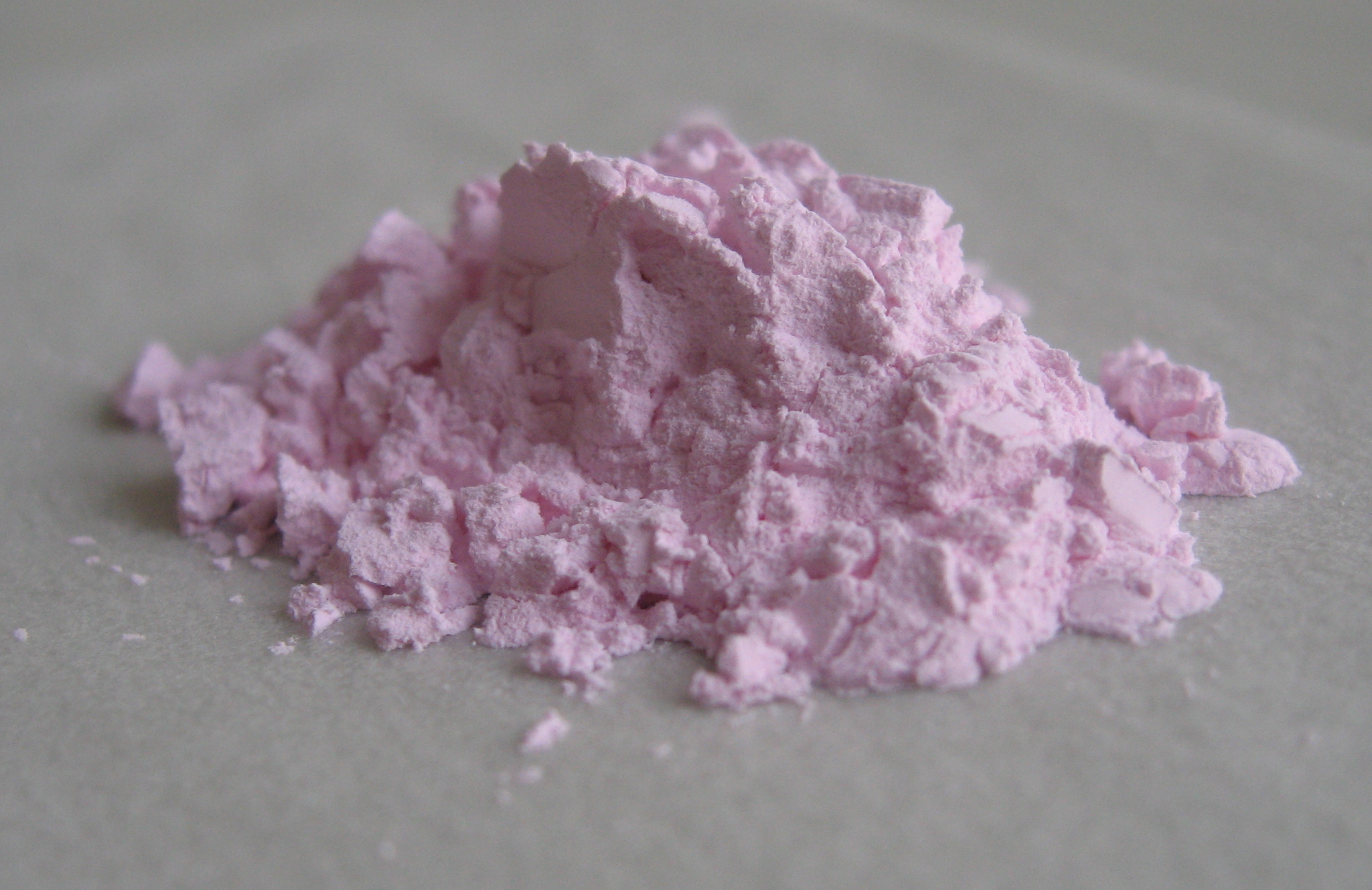Erbium
Erbium:
Picture shows Erbium(III) Oxide, which is slightly pink in colour. Gfobt [Public domain]
Facts about Erbium:
- Erbium: Soft, silvery metallic element with a low toxicity. Erbium salts are pink/rose-coloured.
- Fun fact about Erbium: Erbium has enemies; it constantly gets attacked by water and air which slowly tarnishes it and doesn’t allow its bright, dazzling self to show. Due to this Erbium doesn’t get used in its metallic form. The first sample of pure Erbium metal was produced in 1934, a whole 91 years after its discovery in 1843!
- Chemical symbol: Er
- Atomic number: 68
A crystal structure containing Erbium:

Image of structure containing Erbium, shown by green spheres
Facts about this structure:
- Formula: C140 H476 Br12 Cl18 Er60 N34 O344
- Structure name: octakis(μ6-Carbonato)-hexanonacontakis(μ3-hydroxo)-bis(μ2-oxo)-octadeca-aqua-tetratricontakis(L-threonine)-hexaconta-erbium dodecabromide octadecaperchlorate tetracontahydrate
- Fun fact about the structure: As well as being a very big and pretty structure it is also a rare example of a chiral cluster complex.
- CSD refcode: XUKNAT (What’s this?)
- Associated publication: Xiang-Jian Kong, Yinglan Wu, La-Sheng Long, Lan-Sun Zheng, Zhiping Zheng, Journal of the American Chemical Society, 2009, 131, 6918, DOI: 10.1021/ja901214d
More about Erbium:
Everyone depends on Erbium every day in this day and age. This is because it is used every 50km or so in Erbium doped crystals to amplify broadband signals running through fibre cables. The crystals radiate light at 1530nm. It can be simply explained as redstone repeaters for people who have ever played Minecraft. Just take a second to appreciate Erbium for allowing you to learn about Erbium. Erbium every so often is used in glass. This is due to it absorbing infrared wavelengths. This is especially useful for people using welders and metal workers. Due to its slightly pink colour Erbium is used to colour imitation gems and sunglasses. Another use of Erbium is being used as an alloy with metals such as vanadium. It lowers its hardness and makes it easier to work with. Erbium was found in a small village in Sweden called Ytterby by a Swedish chemist, Carl Gustaf Mosander. Carl was studying gadolinite, in which he found two lanthanides which he named Erbium and terbium. Erbium and terbium are both named after the Ytterby mine, the origin of the gadolinite mineral. This mine was also the origin of the two elements yttrium and ytterbium.
.
Learn More About the International Year of the Periodic Table (IYPT) in Crystals Project:
This project (#IYPTCrystals) is part of the International Year of the Periodic Table celebration (#IYPT2019), read more about the project here.
You can follow us on social media; search for #IYPTCrystals or follow The CCDC on X @ccdc_cambridge on Facebook ccdc.cambridge, on Instagram ccdc_cambridge or on YouTube CCDCCambridge.
Understand some of the terms and concepts used with our Frequently Asked Questions page here.
A 3D visualization showing Erbium in real crystal structures:
